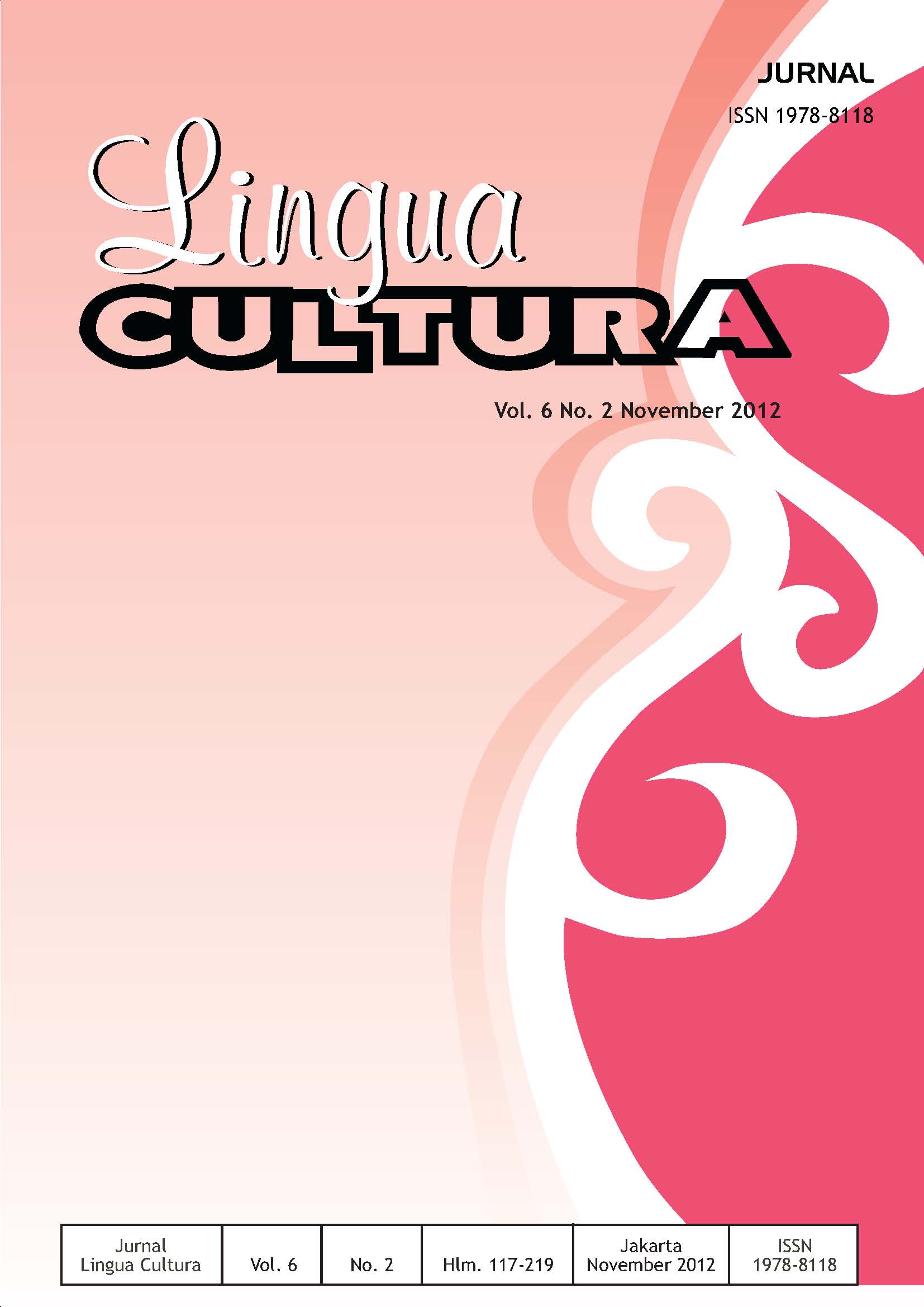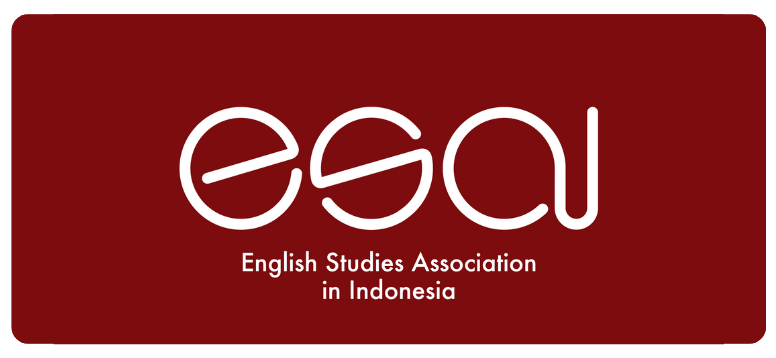A Comparation Of Chinese And Indonesian Time Adverbs
DOI:
https://doi.org/10.21512/lc.v6i2.400Keywords:
Chinese adverb of times, Indonesian adverb of times, behavior, modalAbstract
Chinese time adverbs describe status of behavior, modal frequency, or that the behavior has occurred, occurred in the past, present or future. When describe a time, it usually emphasizes the meaning. Indonesian time adverbs describe an event or action occurred at a time. It indicates the status of behavior, modal or indicates whether the conduct has occurred, has not happened, will happen, repeat and describe the act or thing is not yet completed. This study attempts to shed light on why students incline to make mistake in using Chinese time adverbs. Furthermore, students face difficulty in differentiating between Chinese and Indonesian time adverbs. Chinese Indonesia have the similar meaning of time adverb, such as: gang, yijing, cengjing, zhengzai, jiang, hai, mashang but function in a sentence not exactly same.
References
Hasan, A., Dardjowidjojo, S., Lapoliwa, H., Moeliono, Anton M. (2003). Tata Bahasa Baku Bahasa Indonesia. Jakarta: Balai Pustaka.
Pusat Pembinaan dan Pengembangan Bahasa. (2001). Pedoman Umum Ejaan Bahasa Indonesia Yang Disempurnakan & Pedoman Umum Pembentukan Istilah. Jakarta: Departemen Pendidikan Nasional Republik Indonesia
Zaenal, Arifin E., Tasai, S. Amran. (2006). Cermat Berbahasa Indonesia. Jakarta: Akapress.
陈åŽ. (2004). 英汉å¥æ³•ç»“æž„æ¯”è¾ƒç ”ç©¶. 硕士论文.西安电å科技大å¦
陈群. (2006). 近代汉è¯ç¨‹åº¦å‰¯è¯ç ”究. å››å·å‡ºç‰ˆé›†å›¢.
陈玉兰汉è¯ã€(2007).å°å°¼è¯åŠ¨è¯é‡å å¯¹æ¯”ç ”ç©¶.åšå£«è®ºæ–‡.上海师范大å¦.
æ–¹æ–‡æƒ . (1990). 英汉对比è¯è¨€å¦. ç¦å»ºäººæ°‘出版社.
房玉清. (1989). 使用汉è¯è¯æ³•. 北京è¯è¨€å¦é™¢å‡ºç‰ˆç¤¾.
高远. (2002). 对比分æžä¸Žé”™è¯¯åˆ†æž. 北京航空航天大å¦å‡ºç‰ˆç¤¾.
胡å‰æˆ. (2006). 现代汉è¯åŸºç¡€. 北京大å¦å‡ºç‰ˆç¤¾.
户ç¦æ³¢. (2007). 对外汉è¯æ•™å¦ä½¿ç”¨è¯æ³•. 北京è¯è¨€å¤§å¦å‡ºç‰ˆç¤¾.
æŽæ©åŽ. (2008). 对玩汉è¯æ•™å¦ä¸çš„å误分æžä¸Žç»Ÿè®¡åº”用. 上海大å¦å‡ºç‰ˆç¤¾.
刘月åŽã€æ½˜æ–‡å¨±. (2002). 使用现代汉è¯è¯æ³•. 商务å°åˆ·é¦†.
è‚焱. (2001). 现代汉è¯è¯æ³•ç®€æ˜Žæ•™ç¨‹. æ°‘æ—出版社.
å½å°å·ã€æŽå®ˆçºªã€çŽ‹çº¢. (2004). 对外汉è¯æ•™å¦è¯æ³•é‡Šç–‘ 201 例. 商务å°åˆ·é¦†.
é½æ˜¥çº¢. (2006). 现代汉è¯è¯æ°”副è¯ç ”究. åŽä¸å¸ˆèŒƒå¤§å¦.
王ç¦ç¥¥. (1992). 对比è¯è¨€å¦è®ºæ–‡é›†. 外è¯æ•™å¦ä¸Žç ”究出版社.
许余龙. (1989). 对比è¯è¨€å¦æ¦‚论. 上海外è¯æ•™è‚²å‡ºç‰ˆç¤¾.
æ¨å¾·å³°. (2008). é¢å‘对外汉è¯æ•™å¦å‰¯è¯å®šé‡ç ”究. 北京大å¦å‡ºç‰ˆç¤¾.
è¢æ¯“æž—. (1993). 现代汉è¯ç¥ˆä½¿å¥ç ”究. 北京大å¦å‡ºç‰ˆç¤¾.
å¼ æ–Œ. (1998). 汉è¯è¯æ³•å¦.上海教育出版社.
å¼ ç¼è€¶. (2006). 现代å°å°¼è¯è¯æ³•. 外è¯æ•™å¦ä¸Žç ”究出版社.
å¼ è°Šç”Ÿ. (2000). 现代汉è¯å‰¯è¯ç ”究. å¦æž—出版社.
å¼ è°Šç”Ÿ. (2004). 现代汉è¯å‰¯è¯æŽ¢ç´¢. å¦æž—出版社.
Downloads
Published
How to Cite
Issue
Section
License
Authors who publish with this journal agree to the following terms:
a. Authors retain copyright and grant the journal right of first publication with the work simultaneously licensed under a Creative Commons Attribution License - Share Alike that allows others to share the work with an acknowledgment of the work's authorship and initial publication in this journal.
b. Authors are able to enter into separate, additional contractual arrangements for the non-exclusive distribution of the journal's published version of the work (e.g., post it to an institutional repository or publish it in a book), with an acknowledgment of its initial publication in this journal.
c. Authors are permitted and encouraged to post their work online (e.g., in institutional repositories or on their website) prior to and during the submission process, as it can lead to productive exchanges, as well as earlier and greater citation of published work.
USER RIGHTS
All articles published Open Access will be immediately and permanently free for everyone to read and download. We are continuously working with our author communities to select the best choice of license options, currently being defined for this journal as follows: Creative Commons Attribution-Share Alike (CC BY-SA)


















